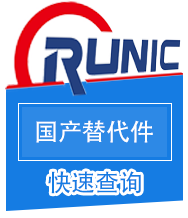 +86 18038161406
+86 18038161406
Toroidal Inductor Function Principle_Color Code_Magnetic Field Calculator
Inductors are the most important electronic components in the electrical field. Compared to other types of inductors, toroidal inductors play a key role in a variety of industrial and commercial equipment as these inductors are widely known for their specific levels of current carrying capacity and inductance.
Currently, many industries rely on toroidal inductors to meet international standards that require minimal electromagnetic fields in the manufacture of consumer products. In many electronic devices, these inductors are used to limit the emission of magnetic fields, which can have a very serious impact on consumer health. Therefore, in order to overcome these magnetic field emissions, electronic manufacturers must use high quality toroidal materials.
Basic Concept
Winding insulated coils on a toroidal core made of different materials such as ferrite and iron powder is called a toroidal inductor. These inductors have a greater inductance per coil and can carry extra current compared to solenoids with the same material and dimensions. Therefore, toroidal inductors are mainly used where large inductance is required.
There are different types of toroidal inductors such as standard toroidal, SMD power, high temperature, coupled toroidal, common mode toroidal inductors, etc. The symbols are shown below:
Structure Construction
Toroidal inductors consist of a ring or toroidal core, which is wound with a section of copper wire. These rings are made of different ferromagnetic materials such as silicon steel, ferrite, laminated iron, iron powder or nickel. Toroidal inductors have a high coupling result between the windings and early saturation.
This construction provides minimal flux loss and helps avoid coupling flux from other devices. Toroidal inductors offer high inductance values and maximum energy transfer efficiency in low frequency applications.
Principle of Operation
Toroidal inductors operate in a similar manner to any other inductor used to increase frequency to the necessary level. Toroidal inductors twist to produce higher frequencies. They are more economical and efficient to use than solenoids.
When current is supplied throughout a toroidal inductor, it generates a magnetic field around it. So the strength of the magnetic field generated depends mainly on the value of the current flowing through it.
In addition, the flux of the magnetic field depends on the number of twists perpendicular to the direction of the current. This flux changes at the same rate as the current flows through the entire inductor. When the flux is connected to the coil, it induces an electromotive force in the coil in the opposite direction to the applied voltage.
Color Codes
Toroidal cores are currently available in both coated and uncoated forms for a variety of applications. Coated cores provide smoother fillet radii and winding surfaces. In these cores, coatings can be used to provide additional edge coverage, edge protection, and insulation.
Different color coatings are used in toroidal cores, such as epoxy enamel and poly paraxylene coatings. Epoxy lacquer coatings are available in different colors such as blue, gray and green (CFR). The epoxy coatings are UL approved and are mainly used for the coating of toroidal cores.
Polyparaxylene coatings are primarily used for small toroidal cores with low thickness coatings and high dielectric strength.
Toroidal core coatings cause the initial permeability to drop depending on the core size. Therefore, this can also occur when toroidal cores are subjected to high permeability and higher winding forces.
There are many benefits to using color coated toroidal cores.
These cores are a perfect match for a variety of coatings such as epoxy, poly paraxylene, and powder coatings, making it easy to increase windings and improve breakdown voltage.
Epoxy coatings have an operating temperature range of up to 200 degrees Celsius.
The coatings provide protection for the edges while providing insulation for the core.
The toroidal coating is required to form an insulating barrier between the wire and the toroidal core to avoid short circuits.
The colored coating does not affect the AL value of the toroidal coil.
Toroidal cores with epoxy coatings offer many advantages such as strength, durability, moisture resistance, chemical resistance and strong dielectric properties.
Magnetic Field Calculation
The toroidal inductor magnetic field can be calculated using the following equation, i.e.:
B=(μ0NI/2πr)
Where:
'I' denotes the amount of current flowing through the entire toroidal coil, 'r' is the average radius of the toroid, 'n' is the number of turns per unit length, and N=2rn is the average number of turns per unit length of the toroidal coil.
Major Advantages and Disadvantages
The main advantages of toroidal inductors include the following:
Lighter weight. Compared to other shapes of cores, toroidal inductors are more compact because they are made of less material.
Toroidal inductors produce high inductance because closed-loop cores have a strong magnetic field and they emit very low electromagnetic interference.
Because there is no air gap, these inductors are much quieter than other typical inductors.
Toroidal inductors have a closed-loop core and therefore have a high magnetic field, higher inductance and Q value.
The windings are fairly short and are injured in the closed magnetic field, so it will improve electrical performance, efficiency and reduce distortion and fringing effects.
Due to the balance of the toroidal coil, the small magnetic flux escaping from the core is very low. As a result, the inductor is very efficient and radiates less EMI (electromagnetic interference) into nearby circuits.
The disadvantages of toroidal inductors include the following:
Occasional problems during operation and testing.
Very difficult to machine wind.
It is more complicated to achieve insulation in these inductors and it is also difficult to have a magnetic gap between the windings.
Toroidal coils are more difficult to wind and more difficult to tune. However, they are more efficient in producing the desired inductance. For the same inductance as a regular solenoid, toroids require fewer turns and can be made smaller.
Major Applications
Applications for toroidal inductors include the following.
Toroidal inductors are used in telecommunications, medical equipment, industrial controls, musical instruments, ballasts, electronic brakes, refrigeration equipment, electronic clutches, aerospace and nuclear fields, amplifiers and air conditioning equipment.
Used in different electronic circuits such as inverters, power supplies and amplifiers, and also in electronic equipment such as computers, radios, televisions and audio systems.
These are used to achieve energy efficiency when inductors are required for low frequencies.
These are used in SMPS, EMI (Electromagnetic Interference) sensitive circuits and filter applications.
Summary
Toroidal inductors are very common and are used in a wide range of applications. The selection of these inductors mainly depends on different characteristics such as case size, dimensions, DC resistance, tolerances, nominal inductance, package type and current rating. All these characteristics play a key role in selecting the right toroidal inductor for a particular application.








